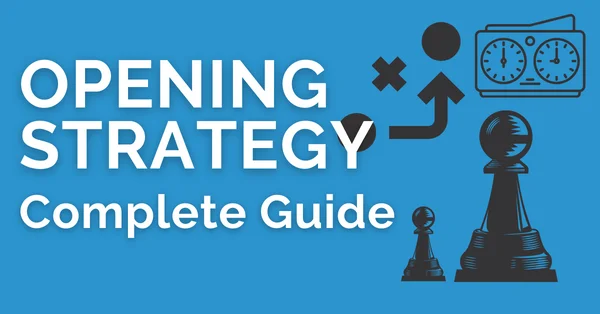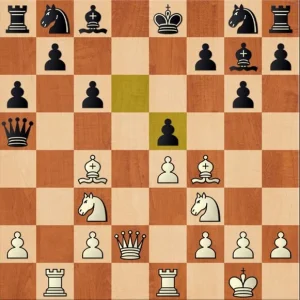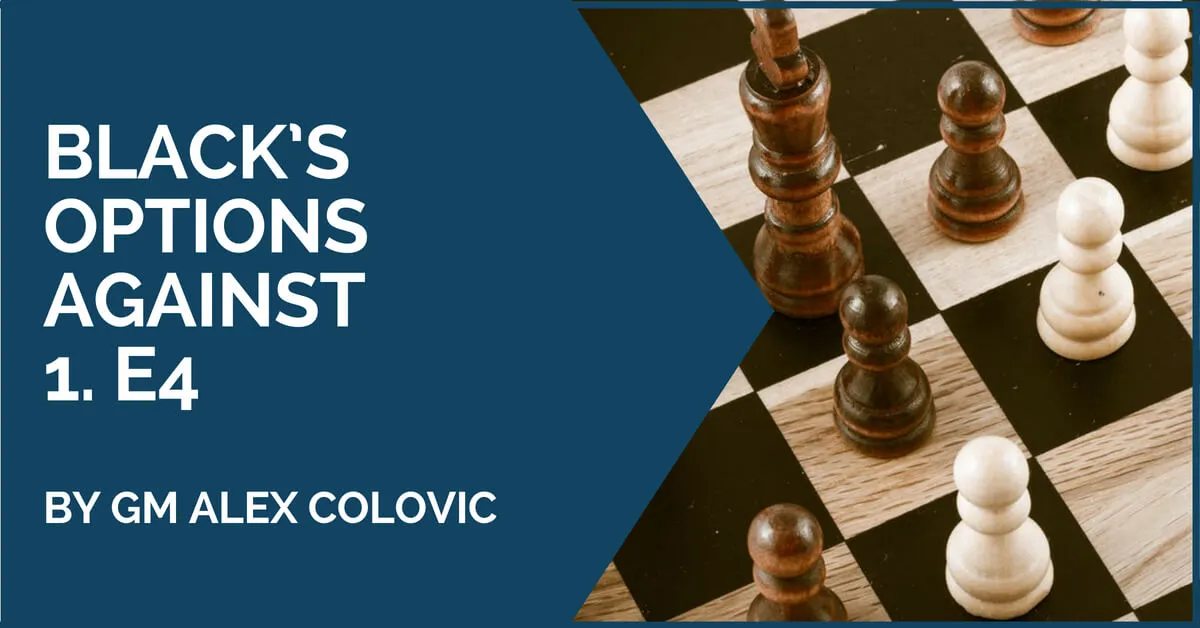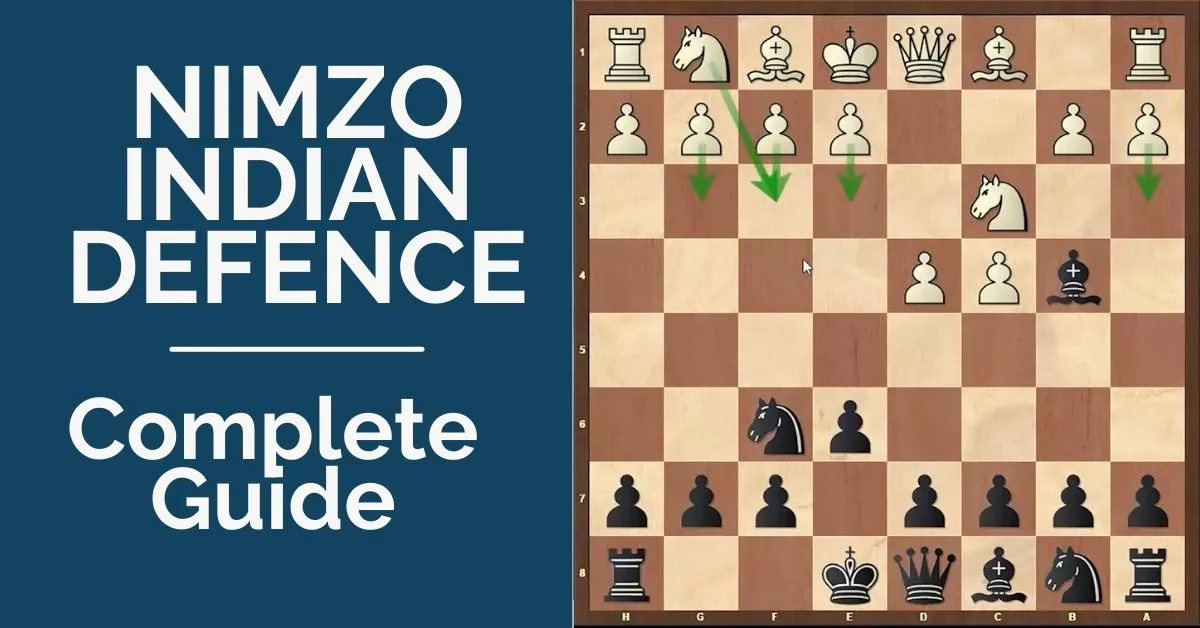Opening Strategy: Complete Guide

Opening strategy refers to the specific moves and principles employed during the first few moves of a chess game, with the goal of gaining an early advantage or controlling key positions on the board.
The first stage of a chess game is opening. It’s surprising how often good players find themselves in unfavorable positions within the first few minutes of the game by playing automatic moves without thinking about the position.
During the opening phase, many players believe that they can rely on instinct rather than careful consideration. This is wishful thinking because each position can change with even ‘not-so-important’ pawn moves which we might ignore. Therefore, it is essential to know how to play the opening even if the opponent uses some offbeat opening strategy.
Apart from following the principles you must also be aware of the general strategies in the opening. If you’re a club player, this becomes even more important as theory and memorization won’t help you navigate all the positions.
In this article, we will do a complete dive into the opening strategy and essential things you should know.
Opening Strategy: Developing the Pieces
In the early stages of a chess game, achieving rapid piece development is an important strategy, and it is crucial to make efficient use of time to achieve this goal. Although material and space are crucial positional factors, time holds an equal level of significance.
Therefore, every piece at a player’s disposal should be utilized. When one player has more pieces developed compared to the opponent then he is said to possess a lead in development.
Whenever we have a lead in development, we should use it to full effect and strike against the opponent.
Let’s take a look at the position below, Black has just played dxe5 attacking the f4 bishop.
What would you play as white here?

With this game we shall discuss another mistake that players make in the opening:
Developing your queen too early or using the queen to attack without focusing on development and king safety.
Early Queen Moves Strategy
It can be tempting to attempt to attack your opponent’s pieces early in the game, but this can be dangerous. Premature attacks can expose your own pieces and give your opponent free tempi. Once your attack is over, your opponent will gain time by attacking your queen.
This will in turn lead to better development for your opponent. Hence immediately putting you on the back foot even if the game hasn’t reached the middlegame yet.
Therefore, in the early stages of a game, it’s typically best to concentrate on controlling the center and developing your pieces.
Want to learn how to increase your rating? See this post for 5 Tips and Secrets on How to Gain Elo Points!
Poisoned Pawn: Common Opening Strategy
An important opening strategy is to sacrifice a pawn to get a lead in development. When taking this pawn is risky, we call the pawn a poisoned pawn. This strategy is connected to a premature queen attack in many openings. We lure the queen into our position by sacrificing pawns and in turn, get an advantage in the lead in development or better control over the center.
In the following position, white focuses on developing the pieces, and black gets greedy and grabs a pawn when he should have focused on finishing development.
It should also be mentioned that using a poisoned pawn strategy is a double-edged sword. You should use the compensation wisely otherwise your opponent will consolidate the material advantage.
Gambits in the Opening
Advantages in chess are interchangeable, which means, for example, you can trade lead in development for a better pawn structure. The fundamental strategy of gambits is that you give up material to trade it for one of three things:
- Time
- Initiative
- Open Lines
There are many openings in which you gambit a pawn. Some of the openings which involve gambits are the Budapest Gambit, Benko Gambit, King’s Gambit, and so on.
The question to ask is why should we gambit a pawn when we can develop naturally and safely? The answer to that comes from each individual’s style.
If you like to play with active pieces and open lines then it makes sense to “invest” a pawn to get all of these in return.
Gambits are also fun to play because of the tactical possibilities the attacker gets due to active pieces. Defending is not easy in chess and hence the defender even though maybe up a pawn will make a mistake and lose the game entirely.
In the following game white sacrifices a pawn to gain time, initiative, and open lines against the black king.
Dealing with gambits
- Learn how to play against gambits that might arise in your opening. It is a good idea to check our opening repertoire and prepare an opening strategy for any gambits that we might face.
- Improving our defensive skills can also help in playing against gambits. You can study games of players like Kortchnoi and Seirawan to learn how to defend difficult positions, as they are known for accepting gambits and defending staunchly.
- When faced with a gambit offer it is not necessary to accept the gambit. Another common opening strategy is to change the course of the game to your style. In other words, play the position to your strengths.
- When dealing with gambits, psychological factors are very important. When our opponent sacrifices pawns or even pieces, we often end up in difficult situations where the best move in the position is not easily found. Therefore, the best strategy is to stay calm and composed in these situations.
Pawn Moves in the Opening
In the opening phase of the game, we should move pawns with a clear purpose which should be to control the center, develop pieces, and make or stop a strong threat. Therefore, any pawn moves in the opening which doesn’t achieve any of the said objectives above can be termed as unnecessary pawn moves.
Making unnecessary pawn moves in the opening primarily cause two major problems:
- Neglects development
- Creates weaknesses
Therefore, we should be very careful about pawn moves in chess because once you play them, you can’t take them back!
Why Castling is an Important Opening Strategy?
One of the fundamental opening strategies is to the castle.
Without castling, the king is more vulnerable to attack.
Therefore, a good strategy in the opening is to get our king castled and it also helps bring the rooks into play. We can either castle kingside or queenside. It mostly depends on the opening you decide to play but here are some general guidelines you can follow:
- King Safety: Consider the safety of your king. If your opponent has a strong attack on one side of the board, it may be safer to castle on the other side. We don’t want to castle right into an attack as that would be quite ironic to the concept of castling.
- Pawn Structure: Look at the pawn structure on both sides of the board. If you have a solid pawn structure on one side, it may be easier to castle on that side.
- Future plans: Consider your game plan. If you plan to launch an attack on one side of the board, it may be better to castle on the other side. One example would be if you’re planning a pawn storm on the kingside, it would be wise to castle on the queenside.
So what to do if your opponent is delaying castling and keeps the king in the center?
A logical way to approach this is to open lines against the king and get more pieces into the attack. The following game shows how white exploited black’s delayed castling and won straight out of the opening,
The key takeaways from this game:
- Look for pawn breaks in the center when you have a lead in the development
- If you’re behind in development, try any means necessary to get level in development. Even if it requires sacrificing some pawns.
Opening Strategy Summary
The opening phase of the game is crucial because it sets the tone for the rest of the game, and a player’s success or failure often depends on the quality of their opening strategy.
By understanding the opening principles and carefully analyzing the position, a player can develop a good opening strategy.
Opening theory and memorization are necessary to the game but they should not become your core focus when learning an opening. The opening strategy should be studied in connection with how it combines with the rest of the middlegame or endgame.
Whatever opening positions you’re studying it’s important to see how the strategy ties into the rest of the game. In short words, always be aware of the bigger picture.
https://thechessworld.com/store/product/understanding-opening-strategy-with-gm-sipke-ernst/










Comments: